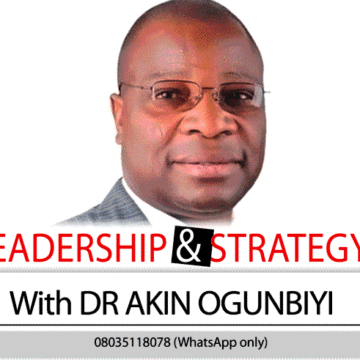
Achieving results as an effective leader is definitely taking on wider dimensions. You cannot just be pragmatic and excel. Using analytics, decision trees, financial models and process maps will not deliver the expected punch, especially in today’s very challenging marketplace.
Jeff Sonnenfeld in his write-up titled, ‘Visiting the Team,’ pointed out that “for a CEO, just being there is not enough.” The CEO must spend not less than 60 percent of his very limited time on “in-person exchanges, face-to-face interactions and unrehearsed natural exchanges with employees and customers.”
Jeff noted that CEOs can only have accurate assessment of issues through “face-to-face communications.” “Employees look to leadership for inspiration and would therefore like to candidly discuss the problems of the organisation with the leaders.” He added that effectiveness in exerting influence depends on the CEO regularly getting direct feedbacks, ensuring proper delegation, encouraging and advancing parallel agendas, coaching his team and also spending quality time to understand problems from the customer’s and employee’s perspectives.
John P. Kotter and Dan Cohen in their book, ‘The Heart of Change,’ pointed out that the CEO “becomes the single biggest obstacle” when he shuts down face-to-face interaction with employees or encourages what Jeff Sonnenfeld called “executive eye wash or planned inspections.” The CEO must empower value delivering actions and be the “wind at employees’ backs.” He must never be the pessimistic captain but an unwavering optimistic boss who “empowers his people not only with new authority and new responsibilities but sincerely removes barriers.”
The CEO, according to this book (The Heart of Change), must also courageously remove the “system barrier of overwhelming bureaucracy” or too formal and rigid arrangements. Other barriers the CEO should get rid of include; performance evaluations and rewards that are at odds with innovation and creativity in the workplace. Evaluations and rewards must empower employees by identifying and rewarding behaviour patterns that promote corporate innovation. He must also deliberately promote an environment of innovation and creative change. The “mind barrier” must be totally removed. Feelings of stability and incremental progress must give way to a new desire that giant leaps are possible. Another obstacle is the information barrier. Information definitely is a source of power and lack of information disempowers.
Entrepreneurial businessman and CEO, also author of the book titled, ‘Up the organisation,’ Bod Townsend, is a well-respected authority “on leadership and culture building without ego.” He said “Leadership is about people. If you push the people down and deep inside, you really do not know which way they will go or what they are really thinking. But if you can lead them and get them to follow you, then you will have the skill that the CEO should have to be a leader.” No wonder he described leadership as “a very rare skill.”
He pointed out that “control is management, that is, the interplay of time, quality and money.” Management, according to Bod, is control in business and characterised by triple constraints (time, quality and money). You can control quality, time and money. But whichever one of the three takes precedence, the other two will suffer.
A recent research by Harvard Business Review (HBR) revealed that the top 100 best performing CEOs in the world have engineering degrees because they always get involved in the day-to-day business of their organisations and are engaged regularly with employees that interface with the marketplace and consumers. Their activities are therefore always revolving around designing, building and creating improved values for users (customers).
The focus of these CEOs is always on products and services with highly beneficial deliverables. They even churn out revolutionary products and services (based on constant feedbacks from employees that deal regularly with customers and potential customers). They make risky moves and are never deterred by failures. Thomas Edison, a popular American inventor said, “I have not failed, I have only found 10,000 ways that will not work.”
Elon Musk said, “If the product is good, the profits will follow.” These CEOs are always getting busy with “design thinking.” They genuinely solve customers’ and potential customers’ challenging problems.
Design thinking, according to Jared Leeds, is the creative methodology that helps CEOs address the underlying needs of the customer (the user). Design thinking enables organisations to build and develop products (and services) for optimal use and performance.
Tools deployed under this framework include empathetic mindset that makes CEOs understand the need of the customer, creativity, open-mindedness and experimentation. It enables the breaking of cognitive fixedness and encourages use of creative ideas that generate creative solutions.
It also re-models employees’ behavioural patterns for corporate innovative development. Problems are solved with creative problem-solving exercises and innovative tools. Group dynamics are aligned with highly creative performance. The customer journey mapping in addition, takes on an empathetic approach.
Design thinking is human-centric. You step into the customer’s shoes like the creative designer and observe his (customer’s) problems from inside out. The CEO (with his team) now uses critical thinking analysis and practical solutions’ tool kits to provide highly beneficial products and services.
ALSO READ: Kidnappers who slept off after abducting victims arrested in Ondo
Source: